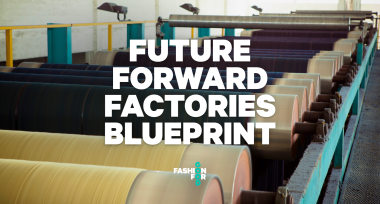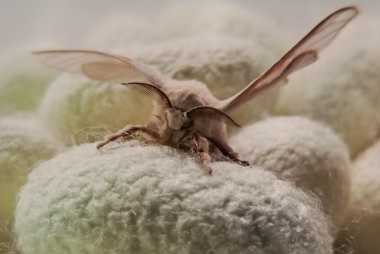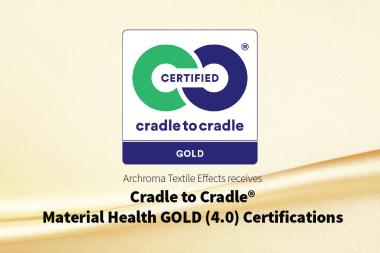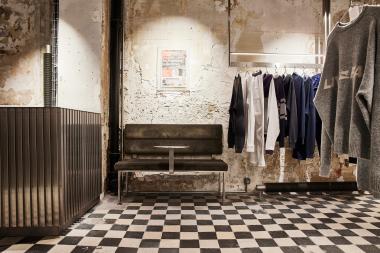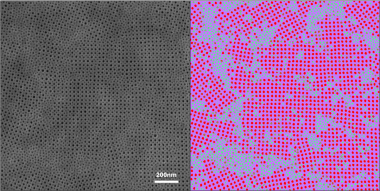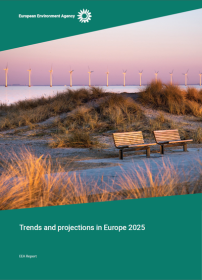Fashion for Good: Blueprint For Near-net-zero Textile Manufacturing
Fashion for Good launches the first open-source blueprint for near-net-zero textile manufacturing, tackling one of fashion’s biggest emissions hotspots. Developed under the Future Forward Factory project, the blueprint offers Tier 2 manufacturers in India five practical, financially viable pathways to reduce carbon emissions by up to 93%.
The urgent need for practical decarbonisation strategies
Textile dyeing, treatment, and finishing facilities (Tier 2 of the fashion supply chain) are a major source of pollution and emissions. These wet processes consume high amounts of water, energy, and chemicals, yet manufacturers face a tangle of barriers: prohibitive upgrade costs, a fragmented approach, and no clear path forward. Without a holistic playbook, decarbonisation remains out of reach and unjustified for most, hindering the industry’s biggest opportunity to decarbonise.
A blueprint for scaling the future of textile manufacturing
Developed as part of the Future Forward Factories project, this one-of-its-kind blueprint is freely available to manufacturers, brands, bringing together energy interventions, disruptive process innovations and best-in-class technologies.
Designed as a practical guide for Tier 2 textile manufacturers in India producing cotton knits and wovens, the blueprint launches today through Fashion for Good. The initiative is backed by catalytic funders Laudes Foundation and H&M Foundation, as well as Apparel Impact Institute, IDH, and on-the-ground experts Bluwin, Wazir Advisors, Grant Thornton Bharat, and Sattva Consulting. Arvind Mills serves as the anchor partner supporting the blueprint’s development in India.
The blueprint provides five tailored pathways based on product type and production process, identifying best available technologies and innovative processes to achieve near-net-zero operations. In case of full implementation of all processes and infrastructure upgrades, factories can achieve up to:
- 93% reduction in carbon emissions
- 33% reduction in water usage and
- 41% reduction in electricity consumption.
Critically, each pathway includes financial analysis (payback periods, internal rates of return, and net present value calculations), revealing where additional support is needed. The blueprint also incorporates a Policy Landscape Overview that maps available government incentives, and includes a “How to Navigate” section enabling manufacturers to identify the scenario most applicable to them.
“The Future Forward Factory blueprint removes the guesswork and delivers a pragmatic solution to a complex problem,” said Katrin Ley, Managing Director of Fashion for Good. “By making this knowledge freely available, we are systematically dismantling the biggest barrier to decarbonisation: the lack of a clear, implementable ‘how-to.’ Every manufacturer now has access to concrete guidance and validated financial data. This is more than a roadmap; it is the essential guide for the industry’s factory transformation.”
Fashion for Good aims to support a selected set of manufacturers in India to retrofit their facilities with the help of this blueprint, with the support of Apparel Impact Institute (Aii). Selected facilities will gain hands-on guidance, technical expertise, and financial clarity to implement the blueprint. Manufacturers interested in taking part in the programme can register their interest here.
“As we build this facility, we are committed to sharing what we will learn. The Future Forward Factory blueprint is proof that a holistic understanding of the decarbonisation journey can unlock an investment case and create operational efficiencies for long-term profitability. Moving from assessments to the actual deployment of solutions.” Abhishek Bansal, SVP-Sustainability at Arvind Mills.
Moving beyond theory, the blueprint‘s viability will be concretely demonstrated by Fashion for Good and Arvind. The partners are aiming to transition from concept to reality and are in the process of exploring the set-up of the first Future Forward factory using this blueprint. This near-net-zero textile production facility will function as a demonstrative, operational proof of concept and will set the foundation for future blueprints, which Fashion for Good is already looking to develop in South Asia and Latin America, developing bespoke solutions to suit the diverse needs of different manufacturing contexts.
To get the blueprint, please visit the Fashion for Good website at this link.
Fashion for Good


